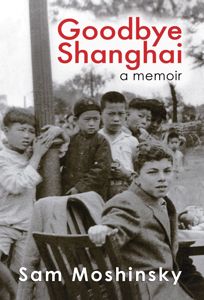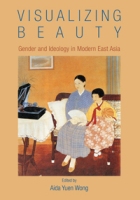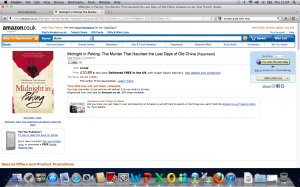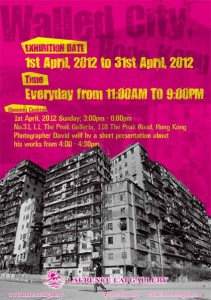Posted: April 6th, 2012 | 2 Comments »
OK, so this is one of my semi-regular really rather anal posts and as we were talking telly yesterday (Underbelly Razor and its Chinese nods) here’s some more. I really liked The Hour, the BBC drama (made by the production company Kudos – and more about them soon on this blog) set in amongst the BBC news department and a fair amount of intrigue in the 1950s (Suez Crisis time). I just sat back and let it wash over me as I tend to do with these things (even Downton Abbey, which got a bit ridiculous in series 2 you have to admit – all those tingling toes!!). Still, I couldn’t help noticing that some people pointed out various problems with Abi Morgan’s script, notably (as this is the China Rhyming blog) the use of the phrase “going for a Chinese”. A number of people, apparently including some language historians (according to the Daily Telegraph here), believe this phrase to date from some time post-1956. Maybe…but I’m not so sure.

Just today I kicked back and decided to take a few hours out to indulge one of my great pleasures – reading Eric Ambler spy novels from the 1930s – and settled in with a cup of tea, a biscuit and Ambler’s brilliant Cause for Alarm (hey, if Pico Iyer can read and re-read Graham Greene over and over, as he says he does in his well worth reading The Man Within My Head, then I can read and re-read Ambler). Ambler wrote Cause for Alarm in 1937, it was published in 1938 and redefined the spy novel in Britain. It also, early on, happens to contain a scene where the hero of the book, Nicky Marlow, takes his girlfriend Claire to a Chinese restaurant run by Cantonese in London, and they eat with chopsticks – an engineer and a secretary. Now, they don’t actually say “going for a Chinese” but it doesn’t seem to me particularly inconceivable that they would have. And, if they didn’t say “going for a Chinese” what did they say that wasn’t’t an impossibly long and convoluted way of saying “going for a Chinese”? Any ideas welcome.
 First US edition cover
First US edition cover
Posted: April 5th, 2012 | No Comments »
Underbelly, the Australian true crime TV franchise that is pretty damn good reaches a peak for me with Underbelly Razor, the story of the late 1920s, early 1930s razor gang wars in Sydney between the gangs of the two madams Kate Leigh and Tilly Devine. A cracking series – better than Boardwalk Empire for my money. Quite a few good references to Chinoiserie or things Chinese including a whore being introduced to her first chop suey (and liking it) as well as several opium den scenes with Chinese serving up the dope to washed up WW1 vets turned killers for hire in Sydney. One character, John “Snowy” Cutmore (a Melbourne standover man exiled to Sydney) particularly likes the dens and also smoke opium (with a pucker pipe) at home. Eventually, towards the end of the series, we see the Chinese involvement in the Sydney dope business in more detail. Not sure how you can see the show outside Australia (though it has popped up on pirated DVD in Shanghai I note).

Posted: April 5th, 2012 | No Comments »
Below I reprint the blurb for an event that may or may not be very interesting this weekend – I’m slightly worried as whoever wrote the blurb about how “Shanghai’s uniqueness as a home and haven to thousands of Jews over many centuries” is clearly a bit of an idiot – “centuries”!!!! anyway….
Goodbye Shanghai: Historic Shanghai book talk with author Sam Moshinsky
Sam Moshinsky shares his story of growing up in the Shanghai of foreign settlements, the Japanese occupation and the return to Chinese sovereignty.
Saturday, April 7, 4pm
M on the Bund, Shanghai
RMB 75, includes a drink
Reservations essential/预约方å¼: reservations@m-onthebund.com, 6350 9988
 I don’t know this book at all…so here’s what Amazon says – and the book’s here too
I don’t know this book at all…so here’s what Amazon says – and the book’s here too
During the first seventeen years of his life, spent in Shanghai, Sam experienced wars, changing regimes, different currencies and a variety of schools that reflected the evolving political landscape. In a world obsessed with conflicting nationalism, his family survived as stateless residents, neither subject to, nor the responsibility of, any country. They were instead, sustained by their Russian Jewish culture and community. Through Sam s memories of early life and his love of history, we learn of Shanghai s uniqueness as a home and haven to thousands of Jews over many centuries.
Born in Shanghai, Sam Moshinsky migrated to Melbourne, Australia, in November 1951, at the age of seventeen. He studied at The University of Melbourne where he obtained a Bachelor of Commerce degree, which led to a successful career as a chartered accountant. Later he became a financial executive, a professional director and an adviser on numerous corporate boards. Sam has also chaired the board of many Jewish organisations including the United Israel Appeal, Temple Beth Israel, the Jewish Museum of Australia and The Australian Jewish News. In June 2000, Sam was awarded a Medal of the Order of Australia in recognition of his contributions to Jewish organisations and the general community.
Posted: April 4th, 2012 | No Comments »
An interesting new book – Visualizing Beauty: Gender and Ideology in Modern East Asia (shame that Hong Kong Uni Press now feels the need to that concentrates on the first half of the twentieth century, edited by Aida Yuen Wong:

What does it mean to be a modern woman in Asia? How do institutionalized gender divisions affect creativity? Whose interests does the pursuit of beauty serve? Is being beautiful empowering, and in what context? How do physical expressions of femininity alter women’s status in society?
Visualizing Beauty examines the intersections between feminine ideals and changing socio-political circumstances in China, Japan, and Korea during the first half of the twentieth century. Eight essays present a broad range of visual products that informed concepts of beauty and womanhood, including fashion, interior design magazines, newspaper illustrations, and paintings of and by women. Studying “Traditional Woman” and “New Woman” as historical categories, this anthology contemplates the complex relations between feminine subjectivity and the promotion of modernity, commerce, and colonialism.
Aida Yuen Wong is Associate Professor of Fine Arts and Chair of the East Asian Studies Program at Brandeis University.
“These insightful essays investigate perceptions of women in East Asia during the first half of the twentieth century through different visual cultures, and will be essential reading for those interested in how women figured at a time of emerging nationalism and modernities.” — Tina Yee-wan Pang, Curator, University Museum and Art Gallery, University of Hong Kong
Posted: April 3rd, 2012 | No Comments »
As the long list for the Orwell Prize has been announced there is a chance to plug Julia Lovell’s great book The Opium War: Drugs, Dreams and the Making of China. Of course there’s some stiff competition, not least from China Rhyming favourites such as the late Christopher Hitchens for Arguably and Misha Glenny’s Dark Market: Cyberthieves, Cybercops and You. But still this is a China matters blog and so we must stick with our kind and wish Julia the best of luck.

Posted: April 3rd, 2012 | 2 Comments »
You can pre-order Midnight in Peking in the UK via Amazon for a discount – the book is officially available from the 31st May…

Posted: April 2nd, 2012 | 1 Comment »
Herewith a plug for sometime Shanghailander photographer, now embedded in Macao, David Hartung and an exhibition of his photographs of the old Kowloon Walled City (which never fails to fascinate me). The exhibition at the Peak Galleria in Hong Kong features a selection of Hartung’s black and white photographstaken in Hong Kong’s Walled City in 1989/90 prior to the once notorious community’s demolition. be on exhibit. They’ll be on show at the Peak Galleria from Sunday, April 1 through to the end of the month.

Posted: April 1st, 2012 | 1 Comment »
I think the International Peoples’ Assembly was one of those myriad organisations for peace in the late 1930s – here’s their Feb/March newsletter for 1938 which highlighted the dire situation in China and called for a boycott of Japanese goods in Britain – quite right too! They had a boycott parade down Oxford Street to support China and oppose Japanese aggression – I hope it worked and loads of people turned out. Apparently no lesser personages than Chiang Kai-shek and Madame Sun Yat-sen had appealed to the IPC to launch the boycott in Britain. Good work all!













